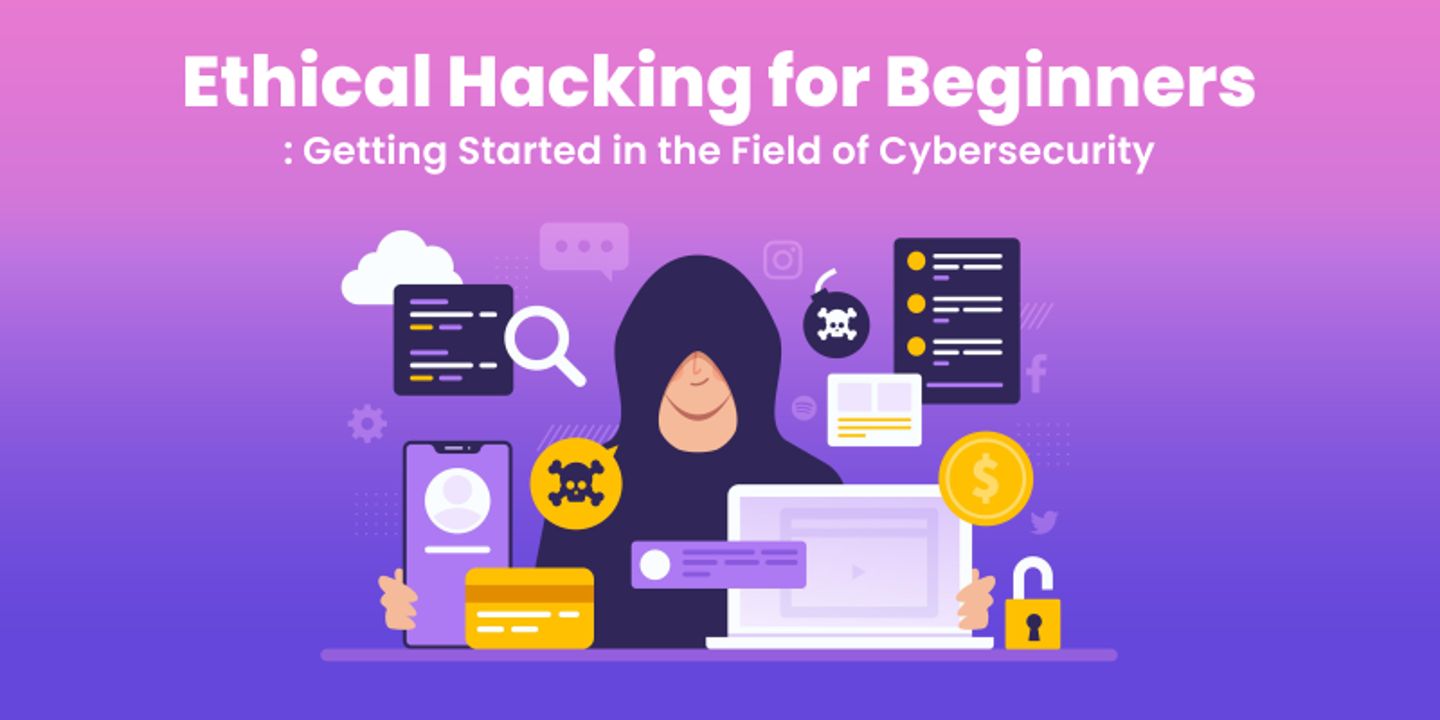Ethical hacking, also known as white hat hacking, is the practice of identifying security vulnerabilities in software and systems to improve cybersecurity defense and protection. As networks and data become more integral to our daily lives, the need for ethical hackers is growing. This field offers an exciting way to help protect systems and data while pursuing a meaningful career.
An Ethical Hacking Certification is an excellent first step for beginners interested in breaking into this field. Certifications like CEH (Certified Ethical Hacker) and eJPT (eLearnSecurity Junior Penetration Tester) provide fundamental skills and credibility for those looking to start a career in cybersecurity.
Table of Contents
Table of Contents:
- Introduction to Ethical Hacking
- Understanding Cybersecurity Basics
- The Role of Ethical Hackers in Cybersecurity
- Setting Up Your Ethical Hacking Environment
- Learning the Tools of the Trade
- Basic Ethical Hacking Techniques and Methodologies
- Legal and Ethical Considerations in Ethical Hacking
- Resources and Further Learning Opportunities
- Conclusion
Introduction to Ethical Hacking
Ethical hacking, also known as white hat hacking, is the practice of identifying security vulnerabilities in software and systems to improve cybersecurity defense. Ethical hackers are skilled at finding weaknesses like bugs, exploits and system flaws, just like criminal hackers.
However, instead of causing harm, ethical hackers work with the system owners to fix the issues. Their goal is to strengthen security and protect users, not steal data or disrupt networks. By thinking like a hacker but working for good, ethical hackers play a vital role in cyber defense for companies, governments, and organizations worldwide.
Also Read: Cyber Whatsapp Apk Download (official) Latest Version
Understanding Cybersecurity Basics
To start your journey as an ethical hacker, it’s important to understand some key cybersecurity concepts. Computer networks run on operating systems like Windows, Linux, iOS and Android. These systems need to be protected from malware like viruses, worms, and ransomware. Hackers may try to access private information through vulnerabilities in networks, applications, or user devices.
Cybersecurity aims to prevent unauthorized access and ensure the confidentiality, integrity, and availability of digital systems and data. Basic security measures include using strong passwords, keeping software updated, enabling firewalls, and installing antivirus software.
Network administrators deploy tools like intrusion detection systems to monitor traffic. Cloud computing and the Internet of things have expanded the attack surface, making cybersecurity skills more crucial than ever. Mastering these fundamentals is the first step toward becoming an ethical hacker.
The Role of Ethical Hackers in Cybersecurity
Ethical hackers play a very important role in strengthening cyber defenses. They use the same techniques as malicious hackers but work legally with the authorization of organizations. Ethical hackers identify vulnerabilities that criminals can exploit like weak passwords, outdated software, or configuration errors.
By discovering these flaws, they help organizations patch security holes before attackers can infiltrate networks. They also test how well security systems work by attempting to bypass controls. This helps evaluate how well companies can prevent, detect, and respond to cyber incidents.
After assessments, ethical hackers provide recommendations to clients on improving policies, deployment of new technologies, and staff training. Their insights are valuable for managing risks in today’s digital world where cyberattacks are increasingly sophisticated.
Setting Up Your Ethical Hacking Environment
To start your journey as an ethical hacker, you will need to set up your hacking environment. One of the most popular operating systems used is Kali Linux, which comes pre-installed with various hacking tools. You can download Kali Linux for free and install it in a virtual machine on your computer using VirtualBox or VMware.
This provides a safe and legal environment to practice hacking without risking your host system. You will also need networking tools, password-cracking tools, vulnerability scanners, web analyzers, and forensic suites. Familiarize yourself with these applications and understand what each one is used for.
It’s also a good idea to learn programming languages like Python that many hacking tools use. With the right software and your computing power, you’ll have an ethical hacking lab ready for learning.
Learning the Tools of the Trade
Once you have set up your ethical hacking environment, it’s time to learn about the various tools used. Start with network scanning tools like Nmap to identify active devices and services on a network. Then look at vulnerability scanners such as Nessus and OpenVAS that test for vulnerabilities automatically.
Password cracking tools like John the Ripper and Hashcat allow you to evaluate your password strength. Web analyzers like Burp Suite and Zed Attack Proxy are useful for assessing website security. You’ll also want to get familiar with Metasploit to simulate the exploitation of vulnerabilities. Take time to understand what each tool is testing for and practice using them.
Refer to online tutorials and help documentation. With regular hands-on use of these tools, you will gain valuable skills for your career as an ethical hacker.
Basic Ethical Hacking Techniques and Methodologies
There are some standard methodologies that ethical hackers follow during a security assessment. The first step is information gathering – collecting data about the target through open-source intelligence and reconnaissance. This helps identify potential entry points. The next step is vulnerability scanning to discover security weaknesses in the system.
Common vulnerabilities and exposures (CVEs) are searched for using tools. After that, hackers try exploitation by attempting to bypass authentication or escalating privileges. The goal is to mimic what attackers do. Logging and documentation at each phase are important.
Finally, a report is prepared detailing findings and recommendations. Methodologies like OSSTMM and PTES provide frameworks for ethical hackers to systematically evaluate security posture. Following such techniques ensures assessments are effective.
Also Read: Windows Loader v2 2.2 Free Download | Windows Loader V2.2.2
Conclusion
Ethical hacking is a growing field that benefits individuals and organizations alike. For beginners, this guide provides an overview of where to start your journey as a white hat hacker, incorporating insights from an Ethical Hacking Course. Understanding basic cybersecurity concepts, setting up your virtual lab, learning important tools, and practicing standard methodologies lay the foundation for your development.
With dedication and hands-on experience over time, you can gain deep skills for testing network defenses and helping to protect systems from real-world cyber threats. As businesses increasingly rely on technology, the need for ethical hackers will only rise. I hope this introduction helps you in your pursuit of an exciting career in cybersecurity.




